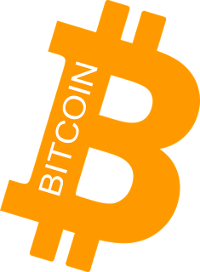 Bitcoin has now been around for over 10 years. Most people have now heard of it – even though only a small minority have ever used it.
Bitcoin has now been around for over 10 years. Most people have now heard of it – even though only a small minority have ever used it.
Yet during that time not a great deal has changed with Bitcoin. There have been big rises in the value of Bitcoin followed by substantial falls which have attracted attention and speculation. However actual usage of Bitcoin for transactions remains low and technically the currency is still pretty much the same as it was when it was launched back in 2008.
In the meantime other cryptocurrencies have emerged such as Monero, Dash, Zen, PIVX and others. These other currencies have advantages and technical features that Bitcoin does not possess.
For Bitcoin meanwhile, transaction processing still takes too long. The Bitcoin blockchain network does not have the capacity to support high-volumes of traffic. Merchant and consumer usage rates for the currency are still minimal. Meanwhile Bitcoin's blockchain, already very large, continues to double in size on a yearly basis.
All these drawbacks hinder Bitcoin's chances of taking off and becoming a widely-used cryptocurrency.
So let’s pause for a moment to consider what an ideal cryptocurrency ought to look like. A much better Bitcoin if you like. Here are some ideas to consider if you were starting from scratch to design a truly fit-for-purpose state of the art cryptocurrency.
First of all, the cryptocurrency should be designed primarily to provide fast and efficient payment transactions. It shouldn't be used to run distributed applications or any other operations.
And it would be a "smart currency”. It would enable holders to transfer their funds to fiat or other cryptocurrencies through its own blockchain processing facilities, without the holder having to use a separate third-party cryptocurrency exchange.
It would offer very fast transaction processing speeds. It should take no more than say 5 seconds at most to process and confirm a transaction.
It would also be capable of supporting a very large volume of users and simultaneous transactions.
Transaction fees will be very low. Small change transactions might even be completely free of charge.
The currency would not be subject to sharp changes in value - neither up nor down.
This is important when using a currency for transaction purposes because people need to be assured that the amount they are going to pay or receive will remain more or less constant in value at the time of the transaction. So-called stablecoins are already able to offer this guarantee.
However a slow value appreciation is preferable to the largely unchanging value of a stablecoin. It means there is more incentive to hold and use the currency. And of course it's much more preferable for a currency to appreciate in the long run than to lose value over time.
The ideal value appreciation target might be something of a range of around 2% -5% per annum appreciation.
 So how might this be achieved?
So how might this be achieved?
The value of the cryptocurrency would need to be automatically monitored and a number of means could be deployed to help regulate the value appreciation within the target range.
A "Proof of Stake" system could be deployed through varying the rate of interest paid to stakers to regulate the price.
The transaction fee could also vary according to the level of usage and the price of the currency.
In addition, the rate of new currency creation or minting could be continually adjusted according to the price level.
A reduction of the volume of the currency in existence could be achieved by imposing a negative rate of interest on wallet holdings. In other words, a wallet balance charge. This would incentivize holders to sell their coins and in so doing this would depress the price.
It's important that the currency and the wallet are easy to use.
This means the wallet should be lightweight in storage size and available in different formats such as mobile app, standalone executable, and a web-browser based local app. It should not be necessary for wallets to download or sync the entire blockchain in order to operate. That is a major disadvantage of many cryptocurrency wallets at present.
The private key mechanism should be easy to use and be well protected from hacker attacks.
And the currency should operate using simple human-readable addresses. For example, users could be free to use their email addresses for transactions, as is currently done with Paypal transactions.
To achieve this, some form of address translation system would be deployed. Users can also have their own unique account numbers instead of using individual transaction addresses if they wish.
The network would use the low-energy Proof of Stake system for generating new currency rather than Proof of Work (mining) which is wasteful of energy resources.
And the currency would provide for anonymous individual transactions, even though AML/KYC regulation compliance would be accommodated in the system.
Finally, it would not be technically possible to "fork" the network, unlike the case with present-day cryptocurrencies which often find themselves getting forked. This protects the network from being trashed or damaged by renegades only interested in their own private profit.
Decisions regarding changes and improvements to the network are made using a democratic voting consensus of nodes and wallet holders.
Is it possible to create such an an ideal cryptocurrency?
Yes it is. Elements of these features are already being developed by the more innovative cryptocurrency projects right now.
We urgently need such a cryptocurrency which can provide real practical benefits to ordinary members of the public who are not tech geeks or crypto fanatics. A currency which is easy to use and understand and which is designed for everyday practical use.
I'm convinced that with the proper vision and determination, we will see a cryptocurrency emerge in the near future which will incorporate most if not all of these features and will then go on to enjoy massive success with the public.
 You can find out more about Bitcoin and cryptocurrencies on my blog at https://www.BreakFreeRebel.com
You can find out more about Bitcoin and cryptocurrencies on my blog at https://www.BreakFreeRebel.com